 GNU PSPP is a program for statistical analysis of sampled data. It is a Free replacement for the proprietary program SPSS, and appears very similar to it with a few exceptions.
GNU PSPP is a program for statistical analysis of sampled data. It is a Free replacement for the proprietary program SPSS, and appears very similar to it with a few exceptions.
 Orekit aims at providing accurate and efficient low level components for the development of flight dynamics applications. It is designed to be easily used in very different contexts, from quick studies up to critical operations. As a library, Orekit provides basic elements (orbits, dates, attitude, frames, ...) and various algorithms to handle them (conversions, propagations, pointing, ...).
Orekit aims at providing accurate and efficient low level components for the development of flight dynamics applications. It is designed to be easily used in very different contexts, from quick studies up to critical operations. As a library, Orekit provides basic elements (orbits, dates, attitude, frames, ...) and various algorithms to handle them (conversions, propagations, pointing, ...).
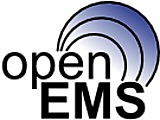 openEMS is a free and open electromagnetic field solver using the FDTD method. Matlab or Octave are used as an easy and flexible scripting interface.
openEMS is a free and open electromagnetic field solver using the FDTD method. Matlab or Octave are used as an easy and flexible scripting interface.
 Core Features of ParaView Displaying Data -You can create different views to visualize data simultaneously and easily identify corresponding data elements. These views can also be customized (e.g. creating C++ plugins to add new types of views). Filtering Data Transform your data to generate visualizations that are easier to understand using ParaView filters. While an extensive list of filters is already provided, you can add custom filtering operations through Python scripting via a plugin or
Core Features of ParaView Displaying Data -You can create different views to visualize data simultaneously and easily identify corresponding data elements. These views can also be customized (e.g. creating C++ plugins to add new types of views). Filtering Data Transform your data to generate visualizations that are easier to understand using ParaView filters. While an extensive list of filters is already provided, you can add custom filtering operations through Python scripting via a plugin or
 The Insight Toolkit (ITK) is an open-source, cross-platform toolkit for N-dimensional scientific image processing, segmentation, and registration. Segmentation is the process of identifying and classifying data found in a digitally sampled representation. Typically the sampled representation is an image acquired from such medical instrumentation as CT or MRI scanners. Registration is the task of aligning or developing correspondences between data. For example, in the medical environment, a CT sc
The Insight Toolkit (ITK) is an open-source, cross-platform toolkit for N-dimensional scientific image processing, segmentation, and registration. Segmentation is the process of identifying and classifying data found in a digitally sampled representation. Typically the sampled representation is an image acquired from such medical instrumentation as CT or MRI scanners. Registration is the task of aligning or developing correspondences between data. For example, in the medical environment, a CT sc
 The Insight Toolkit (ITK) is an open-source, cross-platform toolkit for N-dimensional scientific image processing, segmentation, and registration. Segmentation is the process of identifying and classifying data found in a digitally sampled representation. Typically the sampled representation is an image acquired from such medical instrumentation as CT or MRI scanners. Registration is the task of aligning or developing correspondences between data. For example, in the medical environment, a CT sc
The Insight Toolkit (ITK) is an open-source, cross-platform toolkit for N-dimensional scientific image processing, segmentation, and registration. Segmentation is the process of identifying and classifying data found in a digitally sampled representation. Typically the sampled representation is an image acquired from such medical instrumentation as CT or MRI scanners. Registration is the task of aligning or developing correspondences between data. For example, in the medical environment, a CT sc
 Gwyddion is a modular SPM (Scanning Probe Microsope) data visualization and analysis tool. It can be used for all most frequently used data processing operations including: leveling, false color plotting, shading, filtering, denoising, data editing, integral transforms, grain analysis, profile extraction, fractal analysis, and many more. The program is primarily focused on SPM data analysis (e.g. data obtained from AFM, STM, NSOM, and similar microscopes). However, it can also be used for analyz
Gwyddion is a modular SPM (Scanning Probe Microsope) data visualization and analysis tool. It can be used for all most frequently used data processing operations including: leveling, false color plotting, shading, filtering, denoising, data editing, integral transforms, grain analysis, profile extraction, fractal analysis, and many more. The program is primarily focused on SPM data analysis (e.g. data obtained from AFM, STM, NSOM, and similar microscopes). However, it can also be used for analyz
 HDF5 is a unique technology suite that makes possible the management of extremely large and complex data collections. The HDF5 technology suite includes: A versatile data model that can represent very complex data objects and a wide variety of metadata. A completely portable file format with no limit on the number or size of data objects in the collection. A software library that runs on a range of computational platforms, from laptops to massively parallel systems, and implements a high-level
HDF5 is a unique technology suite that makes possible the management of extremely large and complex data collections. The HDF5 technology suite includes: A versatile data model that can represent very complex data objects and a wide variety of metadata. A completely portable file format with no limit on the number or size of data objects in the collection. A software library that runs on a range of computational platforms, from laptops to massively parallel systems, and implements a high-level
 The Common Lisp Reasoner is an extension to CLOS (Common Lisp Object System) which adds a flexible rule language suitable for various reasoning tasks for AI-related applications (for scheduling, planning and diagnosis). Its rule language supports non-directional constraints and unidirectional rules. CLR also includes ATMS (the Assumption-based Truth-Maintenance System). It supports XML and RDF/XML, OWL.
The Common Lisp Reasoner is an extension to CLOS (Common Lisp Object System) which adds a flexible rule language suitable for various reasoning tasks for AI-related applications (for scheduling, planning and diagnosis). Its rule language supports non-directional constraints and unidirectional rules. CLR also includes ATMS (the Assumption-based Truth-Maintenance System). It supports XML and RDF/XML, OWL.
 SimulaBeta is a continuous numerical simulation program for insulin-glucose feedback control. It is based on a published nonlinear MiMe-NoCoDI model of insulin-glucose homeostasis, calibrated with physiological data. It supports sensitivity analysis, saving and reading parameter sets and sub-models as scenarios and the export of simulation results in various formats for evaluation in statistics packages.
SimulaBeta is a continuous numerical simulation program for insulin-glucose feedback control. It is based on a published nonlinear MiMe-NoCoDI model of insulin-glucose homeostasis, calibrated with physiological data. It supports sensitivity analysis, saving and reading parameter sets and sub-models as scenarios and the export of simulation results in various formats for evaluation in statistics packages.
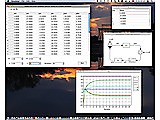 The Bricks collection is a set of Pascal units that provides a class library for rapid programming of high-performance computer simulations in life sciences. It also delivers functionality that facilitates the generation of block diagrams in software. CyberUnits is a reusable cross-platform class library for rapid programming of high-performance computer simulations in life sciences. It supports modelling for biomedical cybernetics and systems biology with Object Pascal.
The Bricks collection is a set of Pascal units that provides a class library for rapid programming of high-performance computer simulations in life sciences. It also delivers functionality that facilitates the generation of block diagrams in software. CyberUnits is a reusable cross-platform class library for rapid programming of high-performance computer simulations in life sciences. It supports modelling for biomedical cybernetics and systems biology with Object Pascal.
 Triangolo is an easy-to-use calculator software helping to determine L-T4 and L-T3 substitution dosage according to the algorithms provided by the European Thyroid Association (ETA).
Triangolo is an easy-to-use calculator software helping to determine L-T4 and L-T3 substitution dosage according to the algorithms provided by the European Thyroid Association (ETA).
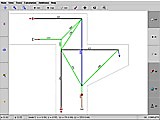 Fachwerk calculates strut-and-tie models used by structural engineers for analysing and designing reinforced concrete structures. The program only uses the equilibrium conditions, thus it is not assuming elastic behaviour.
Fachwerk calculates strut-and-tie models used by structural engineers for analysing and designing reinforced concrete structures. The program only uses the equilibrium conditions, thus it is not assuming elastic behaviour.
 Fachwerk3D calculates three-dimensional strut-and-tie models used by structural engineers for analysing and designing reinforced concrete structures. The program only uses the equilibrium conditions, thus it is not assuming elastic behaviour.
Fachwerk3D calculates three-dimensional strut-and-tie models used by structural engineers for analysing and designing reinforced concrete structures. The program only uses the equilibrium conditions, thus it is not assuming elastic behaviour.
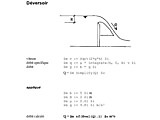 Mavscript allows the user to do calculations in a text document. Plain text and OpenOffice Writer files (odt) are supported. The calculation is done by the algebra system Yacas (default), Jasymca or by the Java interpreter BeanShell.
Mavscript allows the user to do calculations in a text document. Plain text and OpenOffice Writer files (odt) are supported. The calculation is done by the algebra system Yacas (default), Jasymca or by the Java interpreter BeanShell.
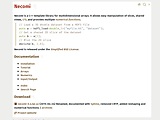 Necomi is a C++ template library for multidimensional arrays. It allows easy manipulation of slices, shared views, I/O, and provides multiple numerical functions.
Necomi is a C++ template library for multidimensional arrays. It allows easy manipulation of slices, shared views, I/O, and provides multiple numerical functions.
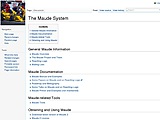 Maude is a high-performance reflective specification and programming language for a wide range of applications. Besides supporting order sorted equational algebra (in the style of OBJ3), it also supports a more general rewriting logic which need not be confluent or terminating. In this way, it is particularly suited for modeling concurrent object- oriented computation. It also includes various environments such as a model checker and an interactive theorem prover.
Maude is a high-performance reflective specification and programming language for a wide range of applications. Besides supporting order sorted equational algebra (in the style of OBJ3), it also supports a more general rewriting logic which need not be confluent or terminating. In this way, it is particularly suited for modeling concurrent object- oriented computation. It also includes various environments such as a model checker and an interactive theorem prover.
 SOLID (Software Library for Interference Detection) is a library for collision detection of three-dimensional objects undergoing rigid motion and deformation. SOLID is designed to be used in interactive 3D graphics applications, and is especially suited for collision detection of objects and worlds described in VRML. Object shapes are represented by primitive shapes (box, cone, cylinder, sphere), and complexes of polytopes (line segments, convex polygons, convex polyhedra). Motion is specified b
SOLID (Software Library for Interference Detection) is a library for collision detection of three-dimensional objects undergoing rigid motion and deformation. SOLID is designed to be used in interactive 3D graphics applications, and is especially suited for collision detection of objects and worlds described in VRML. Object shapes are represented by primitive shapes (box, cone, cylinder, sphere), and complexes of polytopes (line segments, convex polygons, convex polyhedra). Motion is specified b
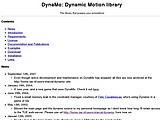 DynaMo is a software library providing classes that take care of the calculation of the motions of objects under the influence of force, torque, and impulse. It can also compute forces for you through the mechanism of constraints. These allow you to easily connect geometries to each other in various ways. A constraint only has to be specified once, and the library will continually enforce it from that moment on by applying the required reaction forces. Over a dozen constraints available, includi
DynaMo is a software library providing classes that take care of the calculation of the motions of objects under the influence of force, torque, and impulse. It can also compute forces for you through the mechanism of constraints. These allow you to easily connect geometries to each other in various ways. A constraint only has to be specified once, and the library will continually enforce it from that moment on by applying the required reaction forces. Over a dozen constraints available, includi
 Chapel is a programming language for improved parallelism, which is designed and developed by Cray Inc. and academia. It's intended for large-scale supercomputing as well as clusters, but also suitable for common multicore workstations, desktop computers and laptops. Chapel is an imperative structured language, shares many attributes with C, C++, Fortra, Java, Python and Matlab, but doesn't derive from either. It supports multithreading, abstractions for data and nested task parallelism, concur
Chapel is a programming language for improved parallelism, which is designed and developed by Cray Inc. and academia. It's intended for large-scale supercomputing as well as clusters, but also suitable for common multicore workstations, desktop computers and laptops. Chapel is an imperative structured language, shares many attributes with C, C++, Fortra, Java, Python and Matlab, but doesn't derive from either. It supports multithreading, abstractions for data and nested task parallelism, concur
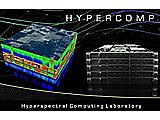 HyperMix is a for unmixing of remotely sensed hyperspectral images It includes several popular algorithms covering different steps of the hyperspectral unmixing chain. It's available pre-packaged for Windows and Ubuntu Linux systems.
HyperMix is a for unmixing of remotely sensed hyperspectral images It includes several popular algorithms covering different steps of the hyperspectral unmixing chain. It's available pre-packaged for Windows and Ubuntu Linux systems.
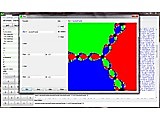 MACE is a calculator, or algorithm and equation solver suitable for students. It covers 160 logical operations, statistical distributions and functions in the fields analysis, arithmetic, complex functions, linear algebra, differential calculus and statistics. MACE provides a wizard and natural formula and function insertion, also comes with a custom scripting language, and provides extensive help.
MACE is a calculator, or algorithm and equation solver suitable for students. It covers 160 logical operations, statistical distributions and functions in the fields analysis, arithmetic, complex functions, linear algebra, differential calculus and statistics. MACE provides a wizard and natural formula and function insertion, also comes with a custom scripting language, and provides extensive help.
 Armadillo is a C++ linear algebra library (matrix maths) aiming towards a good balance between speed and ease of use. The API is deliberately similar to Matlab. Provides efficient classes for vectors, matrices and cubes, as well as many functions which operate on the classes (eg. contiguous and non-contiguous submatrix views). Integer, floating point, and complex numbers are supported, as well as a subset of trigonometric and statistics functions. Various matrix decompositions are provided
Armadillo is a C++ linear algebra library (matrix maths) aiming towards a good balance between speed and ease of use. The API is deliberately similar to Matlab. Provides efficient classes for vectors, matrices and cubes, as well as many functions which operate on the classes (eg. contiguous and non-contiguous submatrix views). Integer, floating point, and complex numbers are supported, as well as a subset of trigonometric and statistics functions. Various matrix decompositions are provided
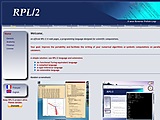 RPL/2 (Reverse Polish Lisp/2) is a langage derived from the RPL made by Hewlett-Packard for its HP-28S. It has some extensions (preprocessor, compilated libraries, new functions, parallel computing), a TeX output, and can draw graphics.
RPL/2 (Reverse Polish Lisp/2) is a langage derived from the RPL made by Hewlett-Packard for its HP-28S. It has some extensions (preprocessor, compilated libraries, new functions, parallel computing), a TeX output, and can draw graphics.
|